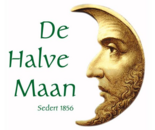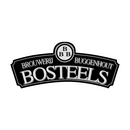Belgian craft beer
Craft Beer in Belgium
Belgium is a country with one of the strongest beer tradition in the world dating back to the 12th century, when local French and Flemish abbeys brewed as a way to raise funds. But it was not until 18th century that trappist tradition arrived in Belgium, as trappist monks had to abandon France due to the French revolution. It's worth noting that trappist is not a style of beer, but a origin and just 12 monasteries in the world can sell trappist beer, 6 of them in Belgium: Rochefort, Orval, Westmalle, Westvleteren, Chimay and Achel. St. Bernardus beer is also based in the Westvleteren recipe, but their license with them expired in the 90's, and they can't longer sell under the trappist name. Both the trappist and non-trappist traditions have given birth to styles as Abbey Dubbel, Abbey Tripel, both pioneered by Westmalle, Quadrupel, Belgian Ale or Belgian Strong Ale.
Another strong brewing tradition in Belgium comes from the Lambic area. This style of brewing is characteristic from the area around Brussels—Pajottenland, in the Senne Valley—and is endemic of that region, as it depends on the wild yeast present on the valley. The beers are spontaneously fermented, and then mixed between old and new blends—the Gueuze Lambic style—or with fruits—like the Fruity Lambics. Famous lambic producers include Boon, Cantillon, Lindemans or 3 Fonteinen.
Belgian beer brands
Van Steenberge
Van Steenberge is a familiar brewery from Ertvelde, in Belgium. It was founded in 1784 by Jean Baptiste De Bruin. The brewery takes the name of Paul Van Steenberge, married with Margriret Schelfault, 3rd generation descendant of Jean Baptiste. In 1978, they partnered with the Augustian friars of Ghent in order to produce their traditional blond ale, whose recipe dated back to 1295, called Augustijn, and later in the 80s they expanded their high fermentation lineup with beers like Piraat and Gulden Draak. Nowadays the brewery is still independant and under the management of Paul Van Steenberge, 7th generation brewer.

Go to Van Steenberge
Chimay
Chimay is a trappist brewery founded in 1862 in Baileux (Belgium). They produce three different ales and a patersbier—a beer for their monks. It was the first brewery to use the Trappist seal in their labels. They use their own water from a well within the monastery walls, and the remains from the brewing process are used to feed their own livestock—that produces the famous Chimay blue cheese.

Go to Chimay
St. Bernardus
St. Bernardus is a brewery from Belgium. Originally, the monks were based in Mont des Cats in Godewaersvelde (France), but the anti-clerical policies in France in the late 19th century forced them to move to Watou (Belgium), a few km away from the original. There they opened the Abbey of Notre Dame de St. Bernard, and started producing trappist cheese.
In 1934, as the attitude towards monks in France improved, they came back to their original location, selling their cheese factory. After the WWII, other trappist monastery, St. Sixtus in Westvleteren gave a license to the cheesefactory in order to commercialize their beers. This marked the foundation of brewery St. Bernard, hiring the brewmaster from Westvleteren, Mathieu Szafranski, who brought the recipes and yeast strain from St. Sixtus.
The beers were sold under different names, Trappist Westvleteren, St. Sixtus or Sixtus, until the license came to an end in 1992. But the recipes and know how remained, and since them the beer is sold under the name St. Bernardus.
Other trappist breweries:
– Rochefort
– Orval
– Westmalle
Go to St. Bernardus
Kasteel
Kasteel is a Belgian family brewery founded in 1865 in Werken by Amandus Vanhonsebrouk. He was the city major and the brewery was part of his farm. In 1900, Amandus son, Emile took the business and moved into the family farm, but after some family problems, he decided to leave Werken and found a brewery in Ingelmunster, called Sint Jozef. After WWI, they expanded their facilities, paying half of the construction workers salary in beer.
In 1956, they focus in the production of a brown ale called Bacchus, changing the brewery name again to Vanhonsebrouck. Next year, they started to brew Gueuze and Kriek Lambics with the St Louis brand. But in 1990's Brussels' producers forbud the use of Lambic denomination for beers outside the Seine valley, but made and exception with the Vanhonsebrouck family. After 1991, they introduced the Kasteel brand, and in 2016 they closed the old brewery in Ingelmunster, moving to the new Kasteel Brouwerij Vanhonsebrouck brewery in Emelgem.
Go to Kasteel
De Halve Maan
De Halve Maan is a historic brewery in the historic center of Brugges (Belgium). Its name means half moon, and the beers are labelled under three brands Straffe Hendrik, Brugse Zot and Halve Maan. The brewery has belonged to the Maes family for 7 generations, and in 2008 they installed a 3 km. beer pipeline under Bruges in order to connect the brewery with the bottling house.

Go to De Halve Maan
Bosteels
Browerij Bosteels is a family brewery founded in 1791 by Evarist Bosteels, and belonged to the Bosteels family until its sale to ABinbev under the management of Antoine Bosteels—the 7th generation.
One of its more famous beer is the Tripel Karmeliet, which recipe is inspired from a 1679 recipe by the old Carmelite convent in Dendermonde.
Go to Bosteels
Lindemans
Lindemans is a lambic brewery founded in 1822 as a small farm in Vlezenbeek (Belgium) by Frans Lindemans. In 1930, they definitely focused in the production of Kriek and Gueuze lambics due to their commercial success. The brewery is still family owned and still brews according to the lambic tradition but with the addition of sweeteners. Their facilities are now modern and their production is now about 85.000 Hl a year.

Go to Lindemans
Rochefort
Trappistes Rochefort - Brasserie de Rochefort is a Belgian Trappist brewery. This brewery is one of the only twelve monasteries allowed to use the trappist name and seal, along with other famous ones as Orval or Westmalle.
Rochefort Abbey was opened in the 13th century, and the brewery has been in production since 1595. For the brewing, they use their own water from the monastery well, as well as their own strain of yeast. The beer can be tasted in the monastery, that admits visitors. They follow the principles of the International Trappist Association
– They brew themselves the beer inside the monastery walls by 13 of their monks.
– The brewery is secondary to their monastic style of life.
– The brewery is non-profit, and the income is just used for covering their living expenses and the monastery manteinance.
Go to Rochefort
Boon
Brouwerij Boon is a brewery from Lembeek in Belgium, specialized in the production of lambic beers beers. It was founded by Frank Boon in 1978, after purchassing De Vits due to the retirement of their previous owners.
In the following years, Boon bought a factory in the center of Lembeek, and then converted it into the original Boon brewhouse. Appart from producing his own bland, Brouwerij Boon help small lambic breweries, sourcing the import of fruits and also bottling other lambic brewers like 3 Fonteinen, Oud Beersel and Mort Subite. He also produces under the name of former lambic brewers, such as Moriau or Dekoninck.
Go to Boon
Dupont
Brasserie Dupont is a Belgian brewery founded in 1950 but operating as a brewing farm since 1759. Its first name was Rimaux-Derrider farm-brewery, producing honey and saison beers. The farm was bought in 1920 by Alfred Dupont, who gave it to his son Louis, who started to develop the saison recipe, and a few years later handed it to his nephew Sylva Rosier, who developed and managed to keep the brewery alive during WWII, and continuing the family tradition that lasts until today. Dupont is worldwide famous for their saisons, elaborated with a special yeast strain that allows them to ferment at unusually high temperatures (even higher than 32º).

Go to Dupont




